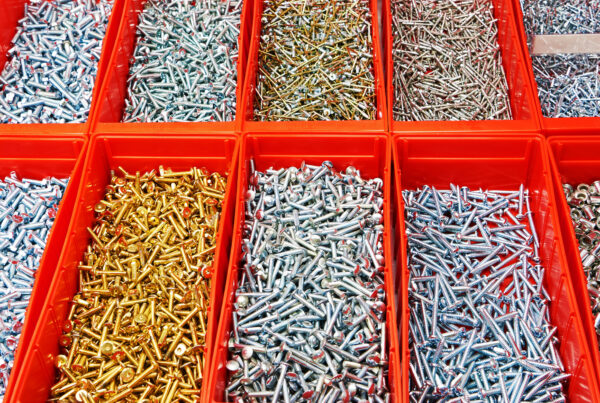Discover how the right fasteners keep telecom networks connected, protected, and performing in the toughest environments.
Telecom networks are made up of more than just antennas, fiber, and servers. Behind the scenes, the smallest components—fasteners—play a critical role in ensuring that equipment remains secure, reliable, and accessible. Whether in a 5G tower, a data center rack, or a roadside cabinet, the right fastening solution protects sensitive electronics and keeps networks online.
In this article, we’ll look at how fasteners from Southco, HEYCO, and PEM support the unique needs of telecom infrastructure.
Why Fasteners Matter in Telecom
Telecom environments combine three challenges:
- Exposure to the elements – outdoor cabinets must withstand rain, wind, dust, and temperature swings.
- Constant vibration – towers, transport hubs, and even building rooftops expose equipment to movement and stress.
- Need for access – technicians require frequent, secure access to enclosures and panels without compromising safety or uptime.
Fasteners are the quiet enablers that address all three. Choosing the right type reduces downtime, extends equipment life, and ensures compliance with industry standards.
Southco: Access Solutions for Enclosures
Southco specializes in latches, hinges, and access hardware designed to balance two priorities: security and accessibility.
- Why it matters: Telecom cabinets must stay closed and sealed, but technicians need to open them quickly for maintenance or upgrades.
- Key features: Vibration-resistant latches, corrosion-resistant finishes, and ergonomic designs.
- Examples in use: Outdoor 5G cabinets, data center server racks, and fiber distribution hubs.
HEYCO: Cable Protection and Wire Management
Telecom networks rely on thousands of feet of cable running through equipment and enclosures. HEYCO provides strain relief, bushings, and grommets that protect cables from wear, sharp edges, and stress.
- Why it matters: Cable failure is one of the most common causes of network issues. Proper strain relief prevents costly downtime.
- Key features: Durable plastic and composite materials, designs that simplify routing, and solutions for high-density environments.
- Examples in use: Antenna cabling, backbone fiber runs, and power feeds in network switchgear.
PEM: Fastening for Electronics and Thin Materials
Telecom hardware often relies on thin sheet metal and compact electronics assemblies. PEM’s self-clinching fasteners provide strong, reusable threads in places where traditional screws and bolts don’t work.
- Why it matters: Space is limited inside enclosures and racks; permanent fastening solutions improve reliability while saving space.
- Key features: High pull-out strength, flush installation, and compatibility with automated assembly.
- Examples in use: Printed circuit boards, network cabinets, and rack-mounted electronics.
Takeaway for Engineers and Procurement Teams
When specifying fasteners for telecom networks, consider:
- Environment – Will the equipment face outdoor exposure or indoor controlled conditions?
- Access requirements – Should the fastener provide permanent security or allow quick, repeated access?
- Material compatibility – Thin sheet metals and plastics require different fastening approaches than heavy steel or castings.
By matching the fastener to the application, engineers can reduce long-term maintenance costs and ensure network reliability.
Final Thoughts
Telecom networks depend on thousands of small, often unseen components. Brands like Southco, HEYCO, and PEM have developed solutions tailored to the challenges of this industry—secure access, cable protection, and fastening for electronics.
Understanding the role of these components helps engineers and buyers make informed decisions, ultimately supporting the uninterrupted connectivity that modern life depends on.







